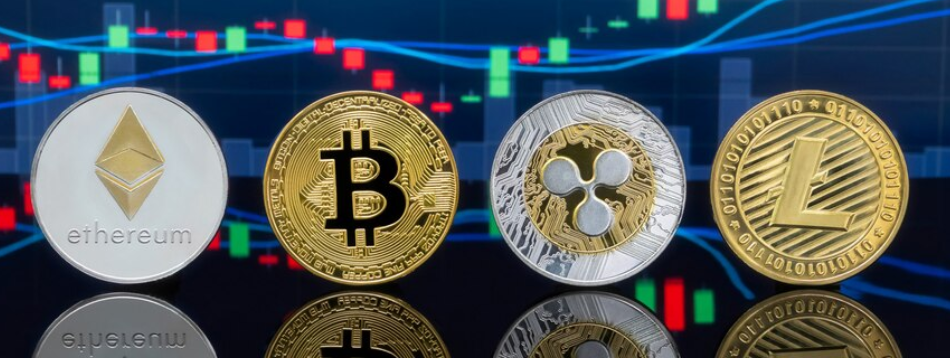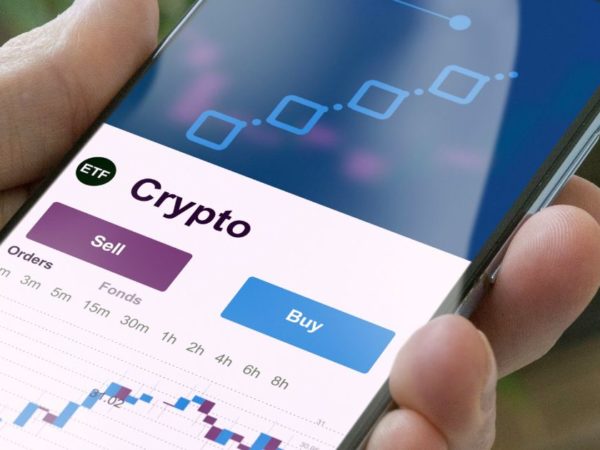Altcoins, a term derived from “alternative” and “coin,” refers to a group of cryptocurrencies that exist as an alternative to Bitcoin. As the first decentralized, peer-to-peer digital currency, Bitcoin enabled numerous cryptocurrencies to emerge.
While Bitcoin remains the first and most well-known digital currency, the emergence of altcoins has grown significantly in recent years.
Many altcoins strive to offer competitive advantages and innovative solutions to address Bitcoin’s perceived shortcomings. These alternative currencies aim to provide improvements over Bitcoin, such as faster transaction speeds or increased security.
How Altcoins are Revolutionizing the Crypto World
Bitcoin was first introduced to the world by Satoshi Nakamoto, whose identity is still unknown. Bitcoin’s whitepaper introduced the world to the concept of a decentralized, trustless, peer-to-peer cash network residing on a blockchain using Distributed Ledger Technology (DLT).
With thousands of cryptocurrencies flooding the market, it is worth examining why Bitcoin remains a forerunner in the crypto industry.
Since its inception in 2009, Bitcoin has skyrocketed from simply buying pizza to ranking as the world’s sixth-largest currency. However, the world of cryptocurrencies extends far beyond just Bitcoin. In the decade since its birth, the crypto industry has seen explosive growth in the number of cryptocurrencies available.
CoinGecko lists over 12,000 cryptocurrencies that are not Bitcoin, each serving various purposes from governance to powering data oracles.
Bitcoin and altcoins differ in various aspects. Bitcoin’s proof-of-work mechanism, used to create its blocks, can be energy-intensive and time-consuming. In contrast, altcoins have embraced proof-of-stake making their validation process more efficient and less energy-intensive.
Additionally, Bitcoin’s smart contract capabilities have limitations, but altcoins have aimed to address these criticisms by offering more sustainable and scalable solutions.
Types of Altcoins
As the crypto landscape has expanded beyond Bitcoin’s inception, many altcoin projects have emerged, each with its distinct features and use cases. These coins strive to set themselves apart from the original cryptocurrency ranging from alternative consensus mechanisms to solving specific problems.
Regardless of their level of adoption, the top-performing altcoins are driven by the goal of offering wider applications beyond the realm of meme coins. Altcoins can be broadly categorized based on their use case.
#1. Stablecoins
Stablecoins are a new breed of altcoins that promise price stability, making them an attractive option for those seeking refuge from the volatile nature of cryptocurrencies. The value of stablecoins is typically pegged to fiat currencies like the EUR, GBP, and USD or to physical assets such as gold.
Certain stablecoins also use algorithms to adjust their prices in response to demand and supply changes.
These digital assets are designed to reduce overall volatility by tethering their value to a basket of commodities that serves as a backup in case of price fluctuation or volatility.
Unlike traditional cryptocurrencies, the value of stablecoins swings within a limited range, making them a more predictable option for investment. Some of the most popular and sought-after stablecoins are Tether (USDT), USDC Coin (USDC), and Dai (DAI).
#2. Security Tokens
Also known as digital securities or tokenized assets, security tokens are a way to represent ownership in real-world assets like stocks, bonds, real estate, and commodities.
By utilizing blockchain technology, these tokens enable fractional ownership, increased liquidity, and global trading opportunities for these assets. Like traditional stocks, security tokens often offer equity to investors resulting in ownership or dividend payouts.
Investors can typically gain access to security tokens through Security Token Offerings (STOs) or Initial Exchange Offerings (IEOs). Stored on a distributed ledger, security tokens represent a digital or liquid stake in tangible assets, making them the blockchain equivalent to shares.
Whether it is a stake in intellectual property, a car, real estate, or other assets, security tokens pave the way for a new era of digital assets. Popular Security tokens include IMPT, Meta Music, Aquarius Fund.
#3. Meme Coins
Meme coins are created as a nod to the popular and often humorous internet meme culture. These coins often rely on a joke or a playful take on well-known cryptocurrencies and are meant to go viral, much like the memes they are inspired by.
Meme coins usually have an ample or unlimited supply, which contributes to their low per-unit price. However, being part of a larger community, combined with the power of social sharing and storytelling, keeps the interest in these assets alive.
Three of the most popular meme coins include Dogecoin (DOGE), Shiba Inu (SHIB), and Baby Dogecoin (BABYDOGE). Even celebrity-inspired coins, like the Will Smith-themed coin, have appeared in the market.
#4. Mining-based
Mining-based altcoins are a type of cryptocurrency that is brought into existence through the process of mining. Utilizing a Proof-of-Work (PoW) mechanism, these digital assets are generated by verifying and adding blocks of transactions to the blockchain.
Some of the well-known mining-based cryptocurrencies include Zcash (ZEC), Monero (XMR), and Litecoin (LTC).
#5. AI Coins
The development of AI has seen incredible progress in recent years, and its integration with the world of cryptocurrency is becoming more and more likely. OpenAI, backed by Sam Altman and Elon Musk, has created ChatGPT, an AI-powered chatbot capable of interacting directly on the blockchain.
This could have broad implications, from boosting security and scalability to enhancing user experience and making market predictions. In addition, developers can create applications and services using revolutionary technology, potentially resulting in a more efficient and transparent system.
Also, AI tokens are being developed to provide an infrastructure for AI projects, such as decentralized AI marketplaces, AI-powered portfolio management, predictions, image generation, pathfinding, autonomous organizations, and more.
These tokens may also confer governance rights on their holders or be used to facilitate transactions on the AI platform. The most popular and trending AI coins are The Graph (GRT), Fetch (FET), and Ocean Protocol (OCEAN).
Popular Altcoins
#1. Ethereum (ETH)
As the second largest cryptocurrency in terms of market capitalization, Ethereum, often referred to as BTC 2.0, has been making waves in the digital asset space. Unlike Bitcoin, which operates on a proof-of-work consensus mechanism, Ethereum transitioned to a proof-of-stake protocol after a successful implementation in September 2022, known as “The Merge.”
This shift in consensus mechanism has allowed transactions to be processed at a more cost-effective rate, both environmentally and economically, and opened up a more comprehensive range of potential uses for blockchain technology through Ethereum’s compatibility with smart contracts.
#2. Ripple (XRP)
<img alt="YouTube video" data-pin-nopin="true" data-src="https://kirelos.com/wp-content/uploads/2023/02/echo/maxresdefault.jpg63ee0aace7c37.jpg" height="720" nopin="nopin" src="data:image/svg xml,” width=”1280″>
Ripple is a payment platform that utilizes blockchain technology to facilitate international payments. It boasts efficient, low-cost transactions and rapid processing speeds. The company has formed partnerships with many financial institutions that use its technology.
Contrary to popular belief, Ripple is not a cryptocurrency. However, it does have a cryptocurrency token called XRP that individuals can invest in.
#3. Litecoin (LTC)
Litecoin, often referred to as Digital Silver, is a peer-to-peer (P2P) cryptocurrency network that enables users to swiftly and affordably transfer funds globally.
Developed as a fork of Bitcoin, Litecoin aims to address three significant challenges that the Bitcoin network faces: slow transaction speeds, scalability problems caused by network congestion, and centralization of mining pools.
Benefits of Altcoins
Bitcoin has a cryptographic protocol and is used primarily as a currency. However, altcoins have a wider range of functionalities and offer a more diverse range of value drivers making them more appealing to investors looking to diversify their portfolios.
- Increased Functionality: Altcoins offer more functionalities than just serving as a digital currency. They enable new use cases in industries such as peer-to-peer finance, automation, and building trust around transactions.
- Diversified Value Drivers: Altcoins have different value drivers, including smart contract platforms, DeFi apps, NFTs, and distributed storage platforms, enabling new ways for consumers and businesses to interact and manage operations.
- Access to more speculative assets: Institutional investment in digital assets is growing to allow for investment in more speculative assets beyond Bitcoin.
- Cheaper price point: As interest in crypto grows, investors seek out altcoin opportunities that offer low prices and a high growth potential.
- Addressing shortcomings of Bitcoin: Altcoins like Ethereum and Solana have been created to address the limitations of Bitcoin, including scalability, security, and cost issues.
Unpredictable Nature of Cryptocurrency: Understanding Why Altcoins Crash
Cryptocurrency markets are characterized by high instability mostly because the value of cryptocurrency is not based on any tangible asset.
Here are a few instances why altcoins would fail:
- Lack of real-world backing for intrinsic value assessment.
- High volatility in the cryptocurrency market.
- More reliance on leverage to finance purchases leads to liquidity issues.
- Fewer buyers are present during times of high-selling activity.
- Institutional trading difficulties due to market upset from large trades.
- The negative impact of state regulations and the clampdown on crypto.
- Concerns over blockchain and network security. Association with the stock market and its volatility.
Factors to Take into Account Before Investing in Altcoins
Analyzing the crypto whitepaper is crucial to evaluate a cryptocurrency as it provides an overview of the project’s goals and strategies. The whitepaper includes the tokenomics, such as the distribution of tokens, supply limits, and information on minting and burning tokens.
It is also crucial to understand the team behind the project, their goals, and how they plan to achieve them. A missing whitepaper or one with spelling and grammatical errors should be considered a major warning sign.
The utility of a cryptocurrency is another crucial factor to consider when investing in the crypto market.
Some cryptocurrencies serve a practical purpose, such as Ethereum, which is widely used for smart contracts and NFT projects. Decentralized digital currencies like Bitcoin are also widely used for payments and as a store of value.
Utility tokens, like Basic Attention Tokens (BAT), serve a specific purpose, such as paying for ads on the Brave browser. On the other hand, some coins, like meme coins, exist as jokes and may not have a sustainable value.
Understanding the risks and making informed investment decisions in the crypto market is important.
To conclude, regulating cryptocurrencies in economies can deliver significant benefits. Moving forward, it is crucial to balance out advancements in digital assets while mitigating risks through proper regulation.
You may also explore best Web 3.0 cryptos and digital wallet.



